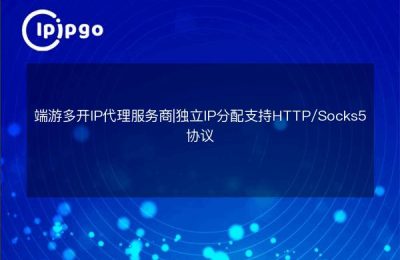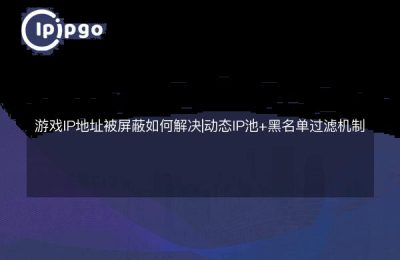
In the network world, proxy IP is a common technical tool used to hide the real IP address and improve access speed. Today, we will talk about how to implement an HTTP tunnel proxy in Java. This process is a bit like building a secret tunnel in the network world, so that your data can quietly and quickly travel between networks. Below, we will unveil this mystery step by step.
I. What is the HTTP Tunneling Proxy?
First, let's figure out what an HTTP tunneling proxy is. Simply put, an HTTP tunnel proxy is like a bridge that connects the client and the server. Through this bridge, the client can send the request to the proxy server, and then the proxy server forwarded to the target server. The response from the target server is also returned to the client through the proxy server. In this way, the client's real IP address is not directly exposed to the target server.
II. Preparatory work
Before we start writing code, we need to do some preparation. First, you need to install the Java development environment. If you haven't installed it yet, you can go to [Oracle official website] to download and install the latest version of JDK.
Third, write HTTP tunnel proxy code
Next, we will write a simple HTTP tunnel proxy program. This program will listen on the local port, receive requests from the client, and forward the requests to the target server. The following is a basic implementation:
import java.io.*;
import java.net.*;.
public class HttpTunnelProxy {
public static void main(String[] args) {
int localPort = 8080.
try (ServerSocket serverSocket = new ServerSocket(localPort)) {
System.out.println("HTTP Tunneling Proxy Server is up, listening on port: " + localPort); while (true) {
while (true) {
Socket clientSocket = serverSocket.accept(); new Thread(new ProxyHub); new Thread(new ProxyHub.accept())
new Thread(new ProxyHandler(clientSocket)).start();
}
} catch (IOException e) {
e.printStackTrace(); } catch (IOException e) { e.printStackTrace(); } }
}
}
}
class ProxyHandler implements Runnable {
private Socket clientSocket; private Socket
public ProxyHandler(Socket clientSocket) { this.clientSocket = clientSocket; this.
this.clientSocket = clientSocket; public ProxyHandler(Socket clientSocket) { this.clientSocket = clientSocket; }
}
}
public void run() {
try (InputStream clientInput = clientSocket.getInputStream();
OutputStream clientOutput = clientSocket.getOutputStream();
BufferedReader reader = new BufferedReader(new InputStreamReader(clientInput));
PrintWriter writer = new PrintWriter(clientOutput, true)) {
String requestLine = reader.readLine(); if (requestLine == node.readLine())
if (requestLine == null) {
if (requestLine == null) { return; return; }
}
// Parsing the request line
String[] requestParts = requestLine.split(" ");
if (requestParts.length ! = 3) {
return; }
}
String method = requestParts[0]; String urlStr = requestParts[1]; { return; }
String urlStr = requestParts[1]; }
String host = url.getHost(); int port = url.getPort()
int port = url.getPort() == -1 ? 80 : url.getPort(); int port = url.getPort() == -1 ?
try (Socket serverSocket = new Socket(host, port); InputStream serverInput = url.getPort()
InputStream serverInput = serverSocket.getInputStream();
OutputStream serverOutput = serverSocket.getOutputStream()) {
// Forward the client request to the destination server
String headerLine; // Forward the client request to the destination server.
String headerLine; while (!
String headerLine; while (! (headerLine = reader.readLine()).isEmpty()) {
String headerLine; while (!)
}
writer.println();
// Read the response from the destination server and forward it to the client
byte[] buffer = new byte[4096]; int bytesRead; // Read the response from the target server and forward it to the client.
int bytesRead.
while ((bytesRead = serverInput.read(buffer)) ! = -1) {
clientOutput.write(buffer, 0, bytesRead);
}
}
} catch (IOException e) {
e.printStackTrace(); } catch (IOException e) { e.printStackTrace(); } }
}
}
}IV. Operational procedures
After writing the code, we can run the program. Open the command line, navigate to the directory where you saved the code, and type the following command to compile the code:
javac HttpTunnelProxy.java
Next, run the compiled program:
java HttpTunnelProxy
At this point, the HTTP tunneling proxy server has been started on local port 8080. You can use your browser or other HTTP client to access the target website via local port 8080, and all requests will pass through our proxy server.
V. Summary
With this simple example, we learned how to implement a basic HTTP tunnel proxy using Java. Although this sample program is relatively simple, it provides a good starting point for understanding how HTTP tunneling proxies work. In practice, we can further extend and optimize this program as needed, for example, by adding support for HTTPS, implementing more complex request and response processing, and so on.
In short, HTTP Tunneling Proxy is like a secret passage in the network world, which can help us to freely navigate through the complex network environment. I hope this article can help you, wish you in the road of programming farther and farther!








